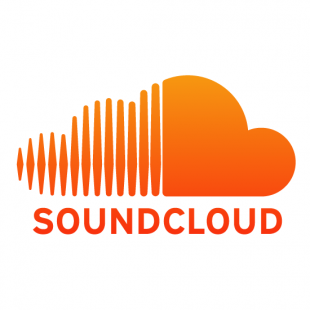SoundCloud is arguably the biggest music-sharing community since MySpace, but now the company is eyeing a different kind of audio: the spoken word.
 The website was founded five years ago by two sound guys who wanted to make it easier for musicians to share their work. After a series of smart moves — releasing robust public APIs, building partnerships with the likes of Facebook, Tumblr, WordPress — SoundCloud has attracted audience (20 million registered users, according to the company) and money (including a reported $50 million investment round in January). SoundCloud’s “freemium” model charges heavier users for extra storage capacity and deeper analytics.
The website was founded five years ago by two sound guys who wanted to make it easier for musicians to share their work. After a series of smart moves — releasing robust public APIs, building partnerships with the likes of Facebook, Tumblr, WordPress — SoundCloud has attracted audience (20 million registered users, according to the company) and money (including a reported $50 million investment round in January). SoundCloud’s “freemium” model charges heavier users for extra storage capacity and deeper analytics.
Now, as part of its effort to “unmute the web,” SoundCloud is courting radio news professionals, podcasters, and indie storytellers. A year-old team of about a half-dozen people is focused on spoken-word content. The company just hired Jim Colgan, formerly a producer and digital experimenter for WNYC public radio, to manage partnerships with audio providers.
“In our outreach…we highlight that if you’ve got great audio, appreciate it for what it is,” said Manolo Espinosa, SoundCloud’s head of audio. “It does not need to have an overlay of a video container. It doesn’t have to have a separate experience. … You don’t have to have a stock video image of a tape player or a microphone on there. The audio stands by itself.”
A recent example: Audio from police scanners captured during the Aurora shootings, edited and posted to SoundCloud by The Madeleine Brand Show.
Producers of radio stories don’t need to be told how powerful sound can be. The problem is, the form has long suffered from neglect on the web. Sample a variety of public-radio sites and you’ll find proprietary Flash-based widgets or direct links to MP3 files. The HTML5 <audio> standard was supposed to fix all that, but ongoing format wars have led to inconsistent browser support, so hardly anyone uses it.
Video producers might still be having this conversation if not for YouTube. Do you remember what it was like trying to embed video in a blog post before YouTube (or Vimeo)? Pretty terrible. YouTube became a de facto standard for video because it nailed three things:
It’s uncommon for a news organization not to upload original video to YouTube — at least those organizations without their own infrastructure for video. There’s no need to fiddle with file formats or pay for server space, and it’s dead simple to embed the file in a web page. Plus people might actually see it.
Standardization, in addition to simplifying things for news outlets, can go a long way in providing a consistent user experience. SoundCloud, of course, wants to be that standard. Think of it as an aspiring YouTube for public radio.
SoundCloud is itself a social network, within which fans can like and comment on tracks. But the content is portable, easily embedded in other sites. And the player is offered in HTML5, which means mobile devices (without Flash) can still render the audio.
Some producers are signing on. L.A.-based KPCC and KCRW, North Carolina’s WUNC, St. Louis Public Radio, and (newly relaunched) CNN Radio are among the traditional outlets actively uploading to the site. Boston’s WBUR and WGBH program The World have switched to using SoundCloud’s player on their websites. A number of other shows are on the platform, free to download and share, including Roman Mars’ wildly popular 99% Invisible.
SoundCloud also provides a way for producers to solicit audio from users. Last week Michael Caputo of the Public Insight Network wrote about American Public Media’s new effort to collect audio responses to survey questions:
For years now, the web has elevated visual presentations, making videos and video streams a means of trading information on sites like YouTube, Skype and Google Hangouts. They, and thousands of similar services, have turned the seen into the shared, and helped make video an important mode of engagement.
But it seems like audio has lagged behind, likely because the vast majority of audio platforms cater to music creators. They enable us to hear the songs and even pass finished pieces along to someone else. But where’s the engagement in all this?
Espinosa told me one of his challenges is winning over commercial outlets, who are, for better or for worse, more focused on monetization and concerned about releasing control of their product. Unlike YouTube, SoundCloud offers no built-in options for advertising or other ways to monetize. That could stall broad industry adoption. Espinosa said SoundCloud’s focus now is on maximizing distribution.